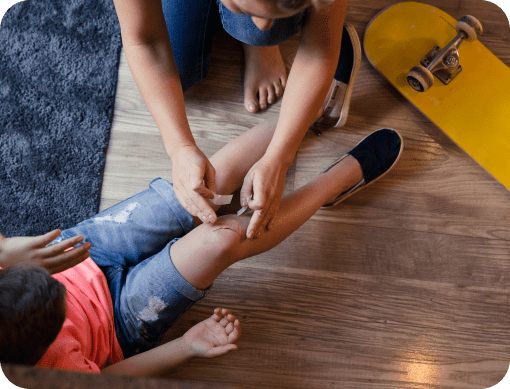DIABETES WOUND CARE
Proper Wound, Foot & Skin Care for Those With Diabetes
From foot problems to skin issues, people with diabetes have unique concerns that make first aid knowledge essential. Understanding how to properly treat even the smallest of cuts can help you better manage your care and minimize the risk of complications.

Keep Your Minor Wounds Minor
Since infection can lead to bigger health problems if you have diabetes, even the smallest of cuts should be treated seriously. Follow these wound care steps and guidelines to make sure you know how to properly treat a minor wound and keep infection at bay.

Clean
Proper cleaning is the first step towards fighting infection. Wash your hands thoroughly, then clean the affected area with soap and water or use an antiseptic wash. Wear gloves if you’re treating someone else. Pat dry with a sterile gauze pad.
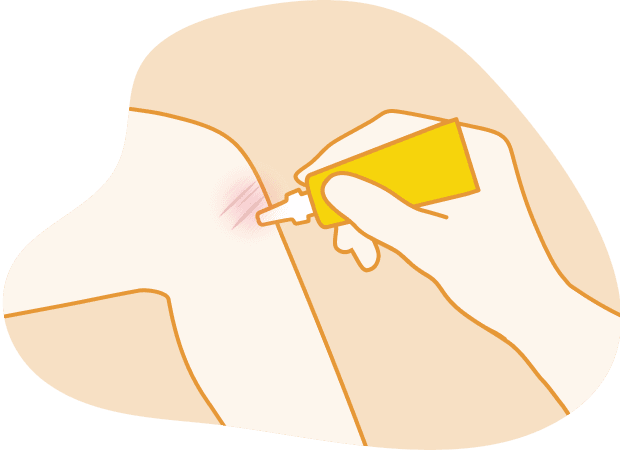
Treat
Before bandaging, check for signs of infection such as tenderness or redness, small blisters or scales, swelling, red streaks, throbbing, or pus. Then, ask your doctor if an antibiotic ointment like NEOSPORIN® can be used to prevent bacterial infections. If so, apply a thin layer to your cuts, scrapes, burns, and cracks.
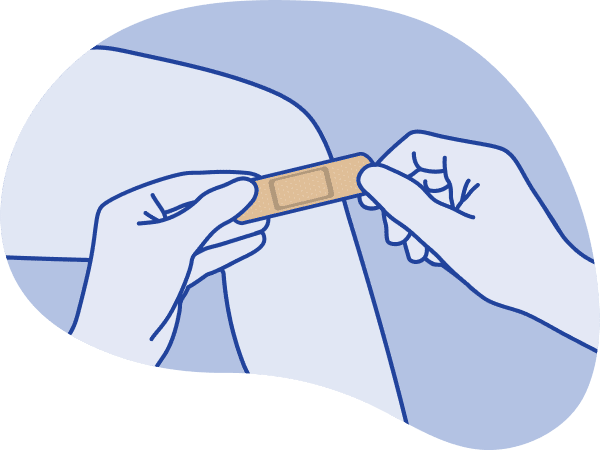
Protect
Any cushioned cover you choose should extend a half-inch beyond the wound on every side to ensure it’s covered properly. Check the label and warning before covering as some bandages might not be appropriate if you have diabetes. To keep your wound protected, ensure it’s covered at all times until fully healed.
Feet First: Your Body Depends on Them
People with diabetes have a higher risk of foot and wound infections and other problems for three reasons:
If uncontrolled, diabetes can cause nerve damage, so you may not always feel sores, injuries, and high-pressure areas like the soles of your feet.
You are more susceptible to poor circulation, and impaired circulation can delay the healing process.
Infections can develop when blood glucose is not under control.
This is why the care of cuts and scrapes on your feet is extra important if you have diabetes. Follow these tips for proper diabetic foot care:
Keep your toenails short (but not too short).
Ensure you dry between your toes.
Always wear shoes outside and make sure they fit properly.
Keep your feet moisturized.
Don’t pop a blister. Clean it with soap and water, then protect it with a bandage.
Avoid over-the-counter corn and callus removers.
If you have a corn or callus, get it treated by a podiatrist.
Never ignore any bump, blister, or redness on your feet.
Not to sound too scary, but complications from foot wounds are a leading cause of hospitalization and amputation among people with diabetes. So always check in with your doctor or medical professional if you have concerns.
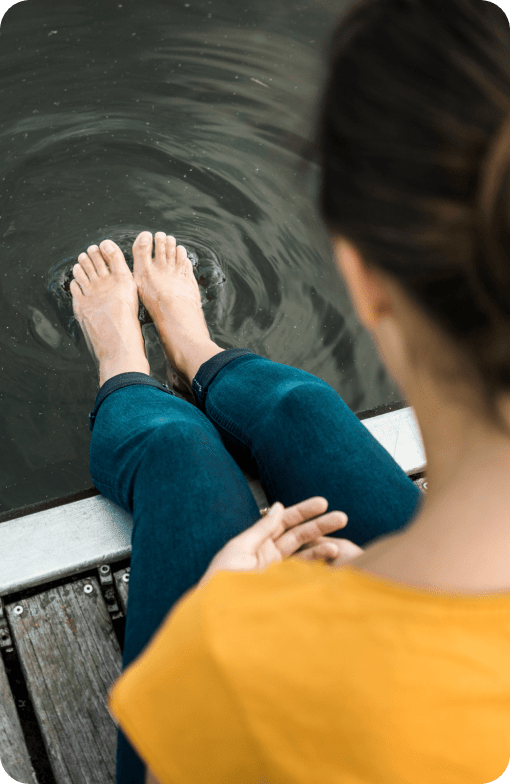
Protect the Skin You’re In
As many as one-third of all people with diabetes will experience a skin-related issue in their lives. In fact, skin problems can be the first sign of diabetes.1
Most of these diabetes-related skin conditions can be kept under control with appropriate care. In addition to getting proper nutrition, exercise, and medication, keep your skin healthy by:
Staying Clean & Dry
After washing, dry off thoroughly. This helps prevent fungal and bacterial infections.
Focusing on Hydration
Drink water and use a moisturizing lotion. Lotions and creams can relieve itch associated with dry skin and prevent irritation and cracking. But avoid using them on open wounds.
Being Proactive
Inspect skin (especially on your feet) daily for cracks, and treat any skin concerns immediately. Keep an eye out for fungal infections as well, since people with diabetes are more prone to them. These infections typically occur between toes and in warm, moist folds of skin.

Caring for Everyday Injuries
Find out how to properly care for cuts, scrapes, and burns so you can feel confident handling these first aid basics.
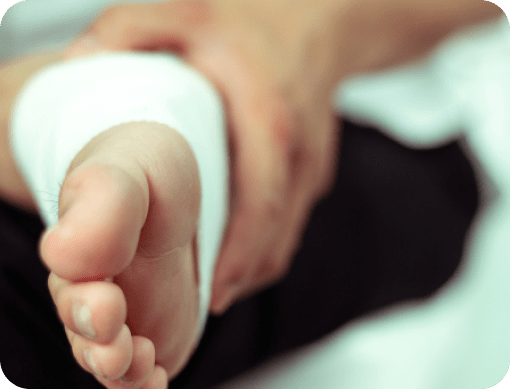
Choose gauze with tape or a wrap like HURT-FREE® wraps that hold your dressing in place without damaging your skin on removal.
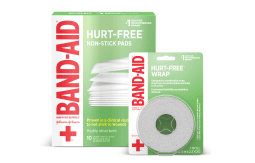
References
Skin Complications, https://www.diabetes.org/diabetes/skin-complications
